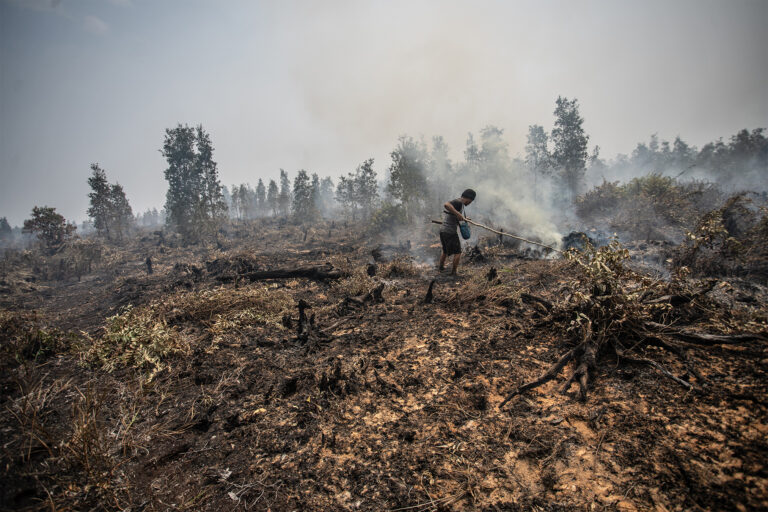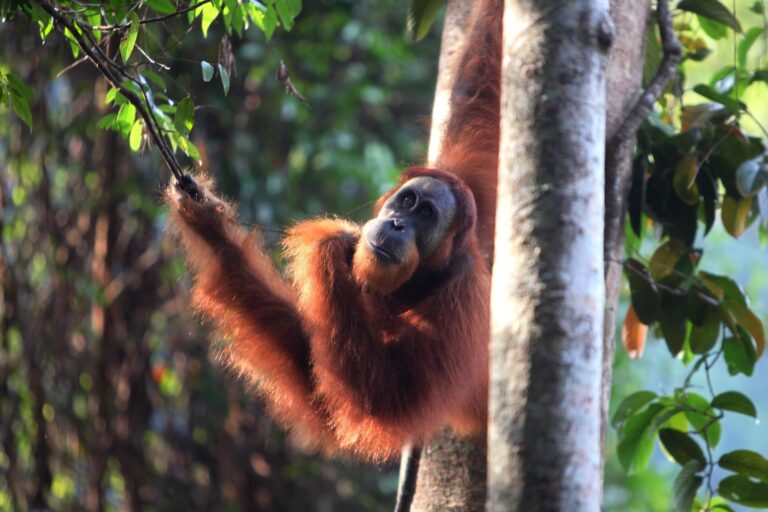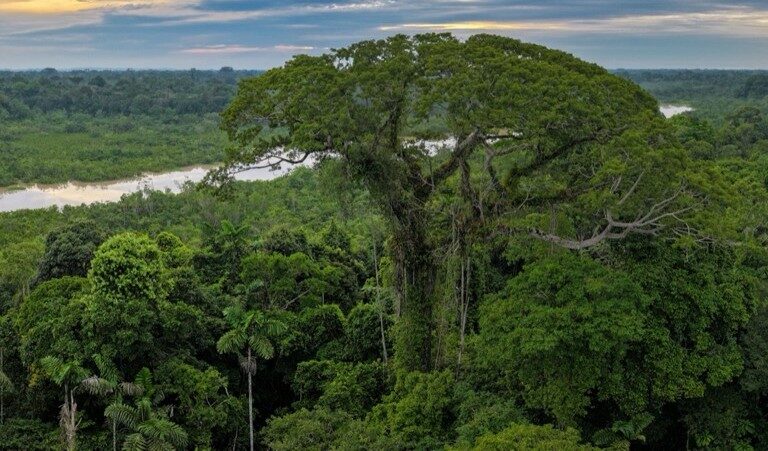- Snow leopards in the Kangchenjunga region regularly cross the borders of Nepal, India, and China in search of suitable habitat, ignoring human-drawn boundaries.
- Their home ranges are significantly larger than previously thought, with some individuals spending up to a third of their time in neighboring countries.
- Experts emphasize the need for cross-border conservation, standardized monitoring, and ecological corridors to ensure healthy snow leopard populations.
KATHMANDU — The first-ever study of GPS-collared snow leopards carried out in Nepal has shown that these hyper elusive big cats spend up to a third of their time in neighboring India and China. It also found that up to half their range lies within these other countries, highlighting the importance of cross-border collaboration to conserve this threatened species.
The findings, published in March, are based on data from tracking collars fitted to four snow leopards (Panthera uncia) in Kangchenjunga Conservation Area in northeastern Nepal, home to the third-highest mountain on Earth. Kangchenjunga is sandwiched to the east by Khangchendzonga National Park in India and to the northwest by Qomolangma National Nature Preserve.
Researchers tracked the individual snow leopards from 20 to 659 days between 2013 and 2017, and found that they roamed across areas six to 97 times larger than previously thought. Three of the animals were also found to have crossed international borders five to seven times, spending 10-34% of their time in India and China, with 28-50% of their home ranges overlapping with India.
“We now have solid proof,” study lead author Samundra Subba, a large carnivore researcher at WWF Nepal, said of long held assumptions about snow leopards’ transboundary movements. “National borders are human constructs — snow leopards don’t recognize them. As long as there are no physical and artificial barriers like fences, and the habitat conditions are similar with relative proportion of prey availability, these big cats can move freely across the landscape.”

Nepal is home to an estimated 397 snow leopards, or about 7-8% of the global population of the big cat, according to the country’s first population survey released in April 2025. Nearly 42% of their habitat lies outside protected areas.
The new study also recorded the highest elevation that a snow leopard hasa ever been recorded at: 5,848 meters (19,186 feet), or nearly as high as Kilimanjaro, the highest peak in Africa (but still much lower than the summit of Kangchenjunga itself, which rises to 8,586 m, or 28,169 ft). Typically, however, snow leopards tend to be found at elevations of 4,000-5,000 m (13,100-16,400 ft).
While the study is the first to track GPS-collared snow leopards in Nepal, similar studies in other places have also identified the transboundary movements of the big cats. The first such study of its kind centered on a lone female snow leopard collared in Pakistan’s Chitra Gol National Park in 2006. Researchers there found that she spent half her life in neighboring Afghanistan.
In Nepal, one of the animals, a female that researchers named Lapchhemba, spent periods of two to 37 days in China, according to the study. Another female, named Yalung, and a male, named Ghangjenjwenga, crossed into India, where they spent up to 21 days at a time. The data showed 49.7% of Yalung’s home range was in India; for Ghangjenjwenga, it was 28.2%.
Lapchhemba’s border crossings “appeared primarily driven by the search for suitable habitats for establishing her home range,” the study says, while in the case of the other two, their territories “spanned both sides of the international boundary, indicating that their crossings were motivated by the need to cover their entire home range.”
But border crossings for snow leopards can be fraught with human-made barriers. A 2024 study noted that a snow leopard traversed nearly 10 kilometers (6 miles) along the border fence between Mongolia and China before returning to her birth area after being unable to find a way across.

Charudutt Mishra, executive director of the Snow Leopard Trust, a U.S.-based NGO, said border fences and other human-made barriers such as roas and railway lines, interfere with species ecology and can fragment populations genetically.
“What I find heartening in the results of the study in Nepal is that the collared snow leopards did not encounter any significant man-made barriers to their cross-border movement,” said Mishra, who wasn’t involved in the study. “This is not common, as borders typically tend to be fenced.”
Subba said snow leopards in Nepal’s eastern landscape, which ranges from Langtang National Park to Kangchenjunga Conservation Area, may need to cross through Chinese territory. For instance, one of the collared snow leopards traveled west from Kangchenjunga to Makalu Barun National Park, in the process passing through China’s Qomolangma National Nature Preserve. Doing so allowed it to avoid the Arun Gorge, a plunge of more than 5,000 m that has long served as a natural barrier to snow leopard movement.
“The movements are to find a suitable new home range,” Subba said. “[Lapchhemba went] to and fro from Nepal to China for about five times, and after approximately eight months, she found a suitable habitat in Sankhuwasabha district in Tokpegola and Thudam, just in between the Kangchenjunga and Makalu Barun habitat.”
Li Xeyang, scientific consultant at the Shan Shui Conservation Center, a Chinese NGO that works with snow leopards, among other threatened species, said such natural border crossings enable vital genetic exchange between regions, allow young snow leopards to settle in new habitats, and maintain a stable and healthy snow leopard population. Li, who wasn’t involved in the study, added that natural transboundary movements “are essential for maintaining healthy gene flow and population resilience.”
Since Nepal’s border regions already have protected areas, Li suggested formally linking such reserves and adopting standardized monitoring protocols to generate comparable data across countries. This would help in identifying the critical habitat and corridor for snow leopards to design targeted actions, she said.
“The snow leopard’s transboundary movements make it an ideal flagship species to promote cross-border conservation and research collaboration,” Li said. “By treating snow leopard conservation as a shared scientific and diplomatic endeavor, range countries can turn political borders into ecological bridges — ensuring the species’ survival while setting a precedent for transboundary wildlife management.”

Such cross-country collaborations are already in place for snow leopard conservation. The Global Snow Leopard & Ecosystem Protection Program (GSLEP) is one of the crucial alliances of 12 snow leopard alliance countries — including India, China and Nepal — serving as a model for cooperative conservation. Experts say there should be more such cross-collaborations and sustainable funding mechanisms.
Within Nepal, the Snow Leopard Conservation Action Plan 2024-2030 aims to promote and enhance transboundary collaborations, with the country holding high-level meetings with India and China to “understand and resolve” common conservation issues. However, it notes that holding such meetings regularly and following up on progress and compliance of decisions remain a challenge.
The new action plan also prioritizes community engagement and conflict mitigation in conserving snow leopards. Retaliatory killing of snow leopards by farmers who have lost livestock to the big cats remains a persistent threat. Experts suggest that cross-country community-based conservation programs and Other Effective Area-Based Conservation Measures (OECMs) outside protected areas could further help in reducing the risks of human-wildlife conflict.
“Snow leopards have lived in those mountains long before any country existed, and long before humans colonized these high mountains,” Mishra said. “It’s therefore natural that, left to themselves, many snow leopards would be crossing international borders during their normal course of movement. I don’t believe that high altitude poses a challenge to snow leopards. Humans and their actions do.”
Banner image: A snow leopard fitted with a GPS collar photographed in Nepal. Image courtesy of DNPWC/ WWF.
Nepal announces its snow leopard population after first-of-its-kind assessment
Citation:
Subba, S. A., Acharya, H. R., Shrestha, S., Koirala, S., Shrestha, R., Thapa, G. J., … Thapa, K. (2025). Lessons for transboundary snow leopard conservation: Findings from a GPS telemetry study in Kangchenjunga Conservation Area, Nepal.Integrative Conservation,4(1), 45-56. doi:10.1002/inc3.70008
Johansson, Ö., Alexander, J. S., Lkhagvajav, P., Mishra, C., & Samelius, G. (2024). Natal dispersal and exploratory forays through atypical habitat in the mountain‐bound snow Leopard. Ecology, 105(4). doi:10.1002/ecy.4264













